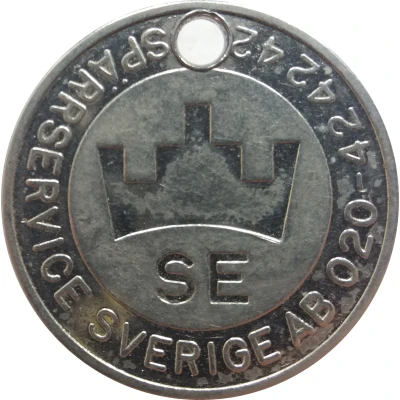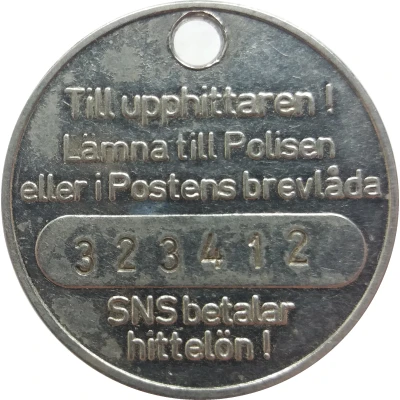


© Ringgy (CC BY)
Token - Skansens Dansbanor-Horndal Metall Produkter ND
| Aluminium | 1.7 g | 25 mm |
| Location | Sweden |
|---|---|
| Issuing entity | SKANSEN'S Dance Courses |
| Type | Amusement tokens › Dance tokens |
| Composition | Aluminium |
| Weight | 1.7 g |
| Diameter | 25 mm |
| Shape | Scalloped (with 10 notches) |
| Technique | Milled |
| Orientation | Medal alignment ↑↑ |
| Updated | 2024-11-14 |
| Numista | N#313204 |
|---|---|
| Rarity index | 97% |
Reverse
Two inner circles enclose the main legend. Inside of inner circle acronym in block letter for Metal Producers. Circle cutout at center removed a portion of those letters.
Script: Latin
Lettering:
METALL PRODUKTER
MP
HORNDAL
Translation: METALL PRODUKTER = Medal Producer.
Edge
Smooth edges to scalloped cut aways.
Comment
http://www.worldofcoins.eu/forum/index.php/topic,21988.msg147976.html?PHPSESSID=b9ab34a8da97b0d6237509f847a6f59d#msg147976If you click on the link it is a colletion of this and other like tokens.
Skansen is an open-air historical museum on Djurgården island in Stockholm, opened in 1891. It also houses a zoo and hosts concerts and other entertainment events. One of the many things you could/can do there is go for a dance with a live band. This token can also be found with a star punched out in center. This is only speculation. The companies names on the rev may have been sponcers for such dances. HORNDAL is a town in Sweden that was built around the mill. When they closed Horndal it was devistating to the town since many residences were 4th and 5th generation steel mill workers. The city does not look like the cites in the United States that are closed company towns. It is beautiful with gorgeous homes. You can read about the town in tourist information. There still is a dark side since it was a city built around a factory that closed. A band that goes by the name of the city. They write and produce songs of the devistation created by the loss of the primary income producer in a rural town.



